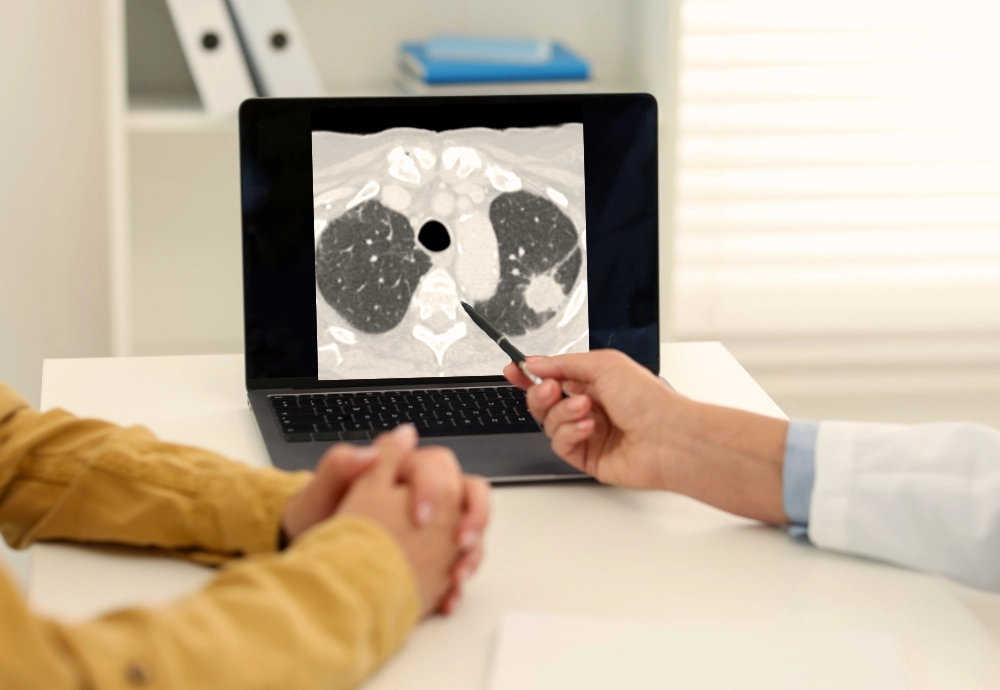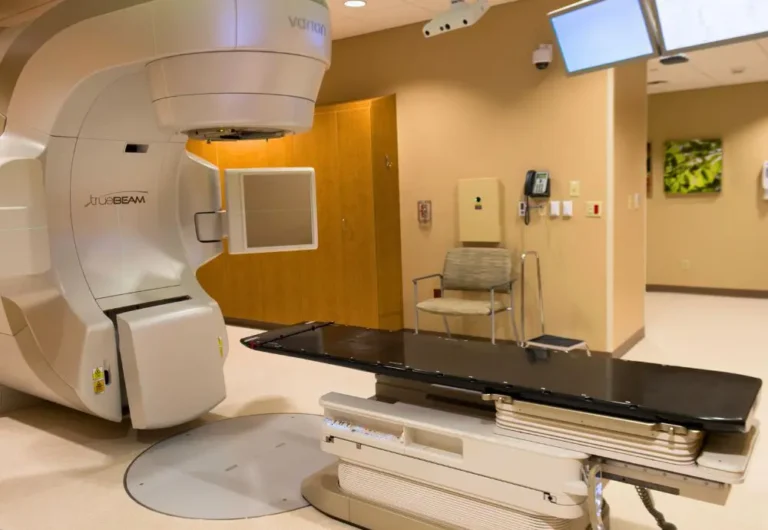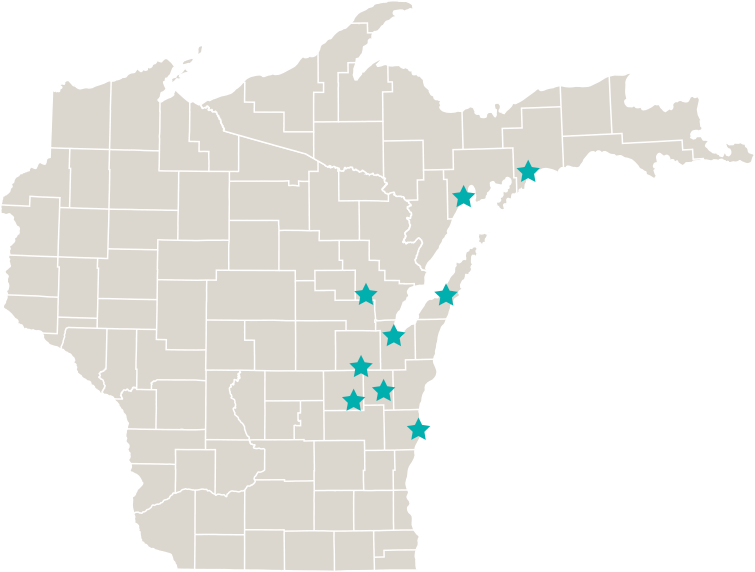Lung cancer is the leading cause of cancer-related death in the United States—but early detection saves lives. Low-dose CT lung cancer screening and a specialized, non-invasive radiation therapy called SBRT can help detect and treat lung cancer at its earliest, most curable stage.
What Is Lung Cancer Screening?
Lung cancer screening uses a low-dose CT scan of the chest to detect tumors before symptoms begin. The scan is quick, painless and effective, helping identify lung cancer at an earlier, more treatable stage.
You may be eligible for lung cancer screening if you:
- Are between the ages of 50 and 80
- Have a smoking history of 20 pack-years or more (for example, one pack a day for 20 years or two packs a day for 10 years)
- Currently smoke or quit within the past 15 years
Talk to your primary care provider to see if screening is right for you.
Treatment Options for Early-Stage Lung Cancer
When lung cancer is detected early through screening, surgery is typically the first choice for treatment. However, not everyone is a candidate for surgery.
For those who aren’t, Stereotactic Body Radiation Therapy (SBRT) offers a non-invasive, highly effective alternative.
What Is SBRT?
SBRT is a precise, outpatient radiation therapy that delivers high doses of radiation directly to the tumor—typically over just one to five sessions. The procedure is painless and designed to minimize damage to nearby healthy tissues using daily imaging to ensure accurate targeting.
Who Should Consider SBRT?
SBRT is ideal for people with small- to medium-sized tumors located within the lung tissue that have not spread to nearby structures. It is often recommended for patients who:
- Have other medical conditions that make surgery high risk
- Have reduced lung function
- Have tumors in locations that are difficult to reach surgically
What Are the Side Effects?
Most patients experience minimal or no side effects. When side effects do occur, they may include:
- Fatigue
- Cough or shortness of breath
- Skin irritation in the treated area
Some patients develop scar tissue at the treatment site, which may appear on future scans but usually causes no symptoms.
What Happens After Treatment?
We perform a follow-up CT scan two to three months after treatment to evaluate the response. It’s normal to see scar tissue where the tumor was. These changes usually stabilize over time. SBRT offers local control rates of about 90%, making it a powerful tool in the fight against early-stage lung cancer. If you’re at risk, don’t wait—talk to your doctor or contact our team to learn whether screening or SBRT may be right for you.








